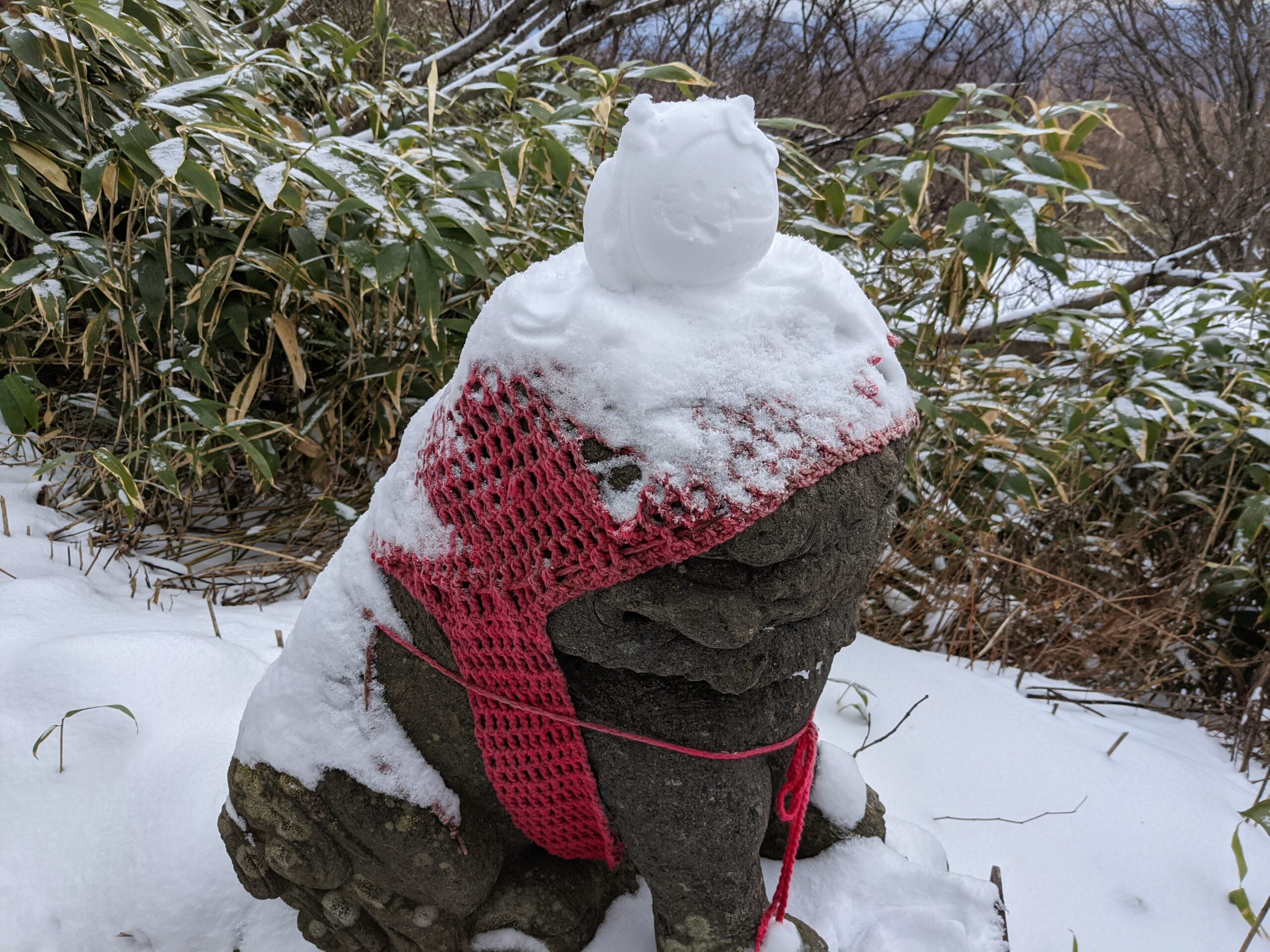One of the 100 famous Japanese mountains in reach for a day hike from Tokyo is Mt Nasu (which in Japanese is a homophone with “eggplant”) in Tochigi. It’s easy (though not particularly cheap) to get there by (bullet) train and bus. This time I went for a quick hike to the Chausu peak (which is a much shorter climb than the highest Sanbon-yari). The weather wasn’t exactly great, cloudy and extremely windy, but at least it wasn’t dumping on me.
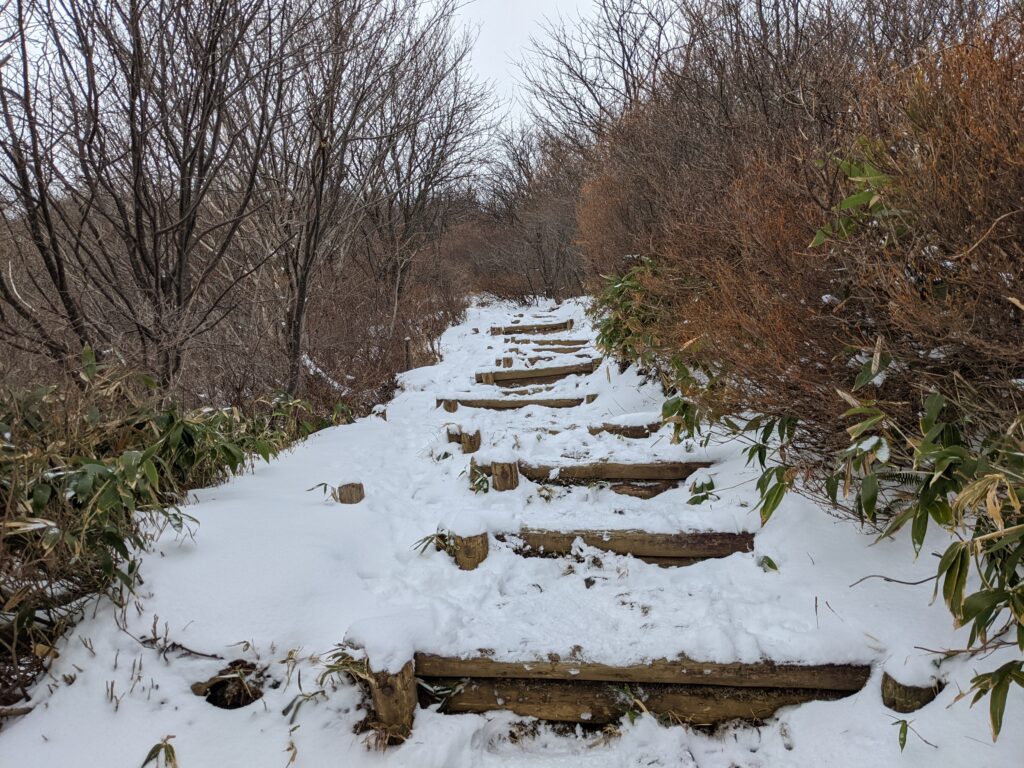
The trail was snowed from the start, and at points it was frozen into solid ice too, making me regret not taking my spikes. At first it was a more touristy trail with steps, but as soon as I entered the volcanic area and the plants disappeared, it turned into a collaboration of rock, sand and snow I’d expected of much taller mountains.
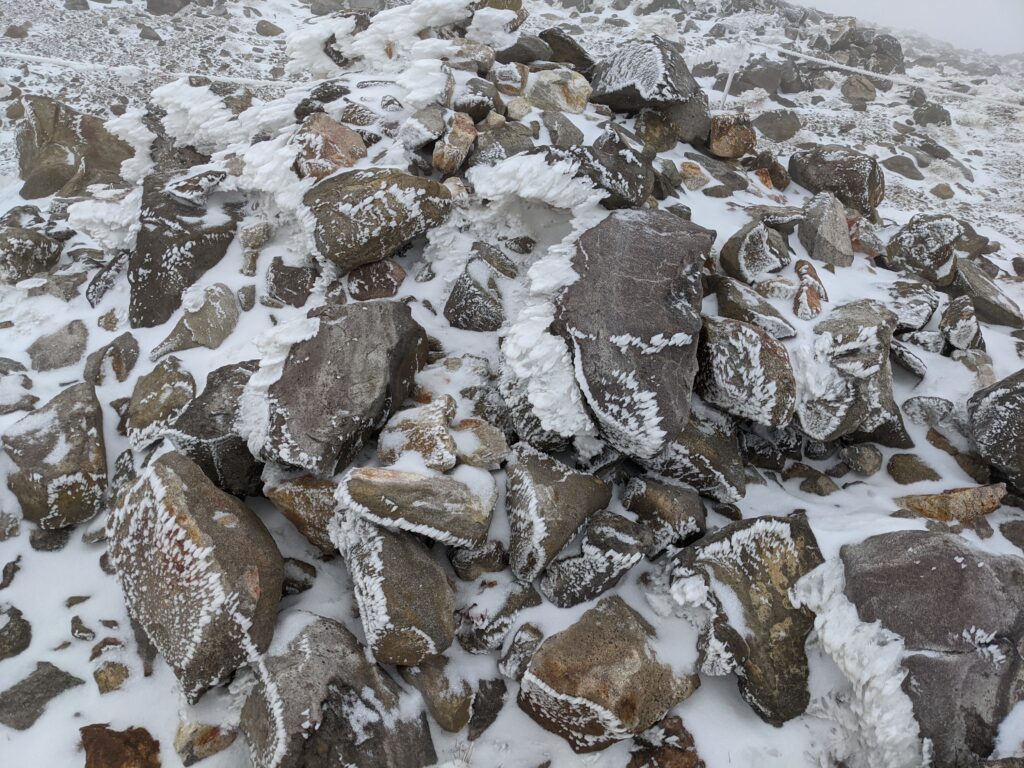
Apparently the wind is usually very strong in the area, so the snow was frozen on the rocks in formations that reminded me of the penitentes on Aconcagua (which are much larger fins of ice built by the wind). Unlike near the trailhead, there wasn’t that much snow on the path to make it slippery at all, but the environment in general turned white.
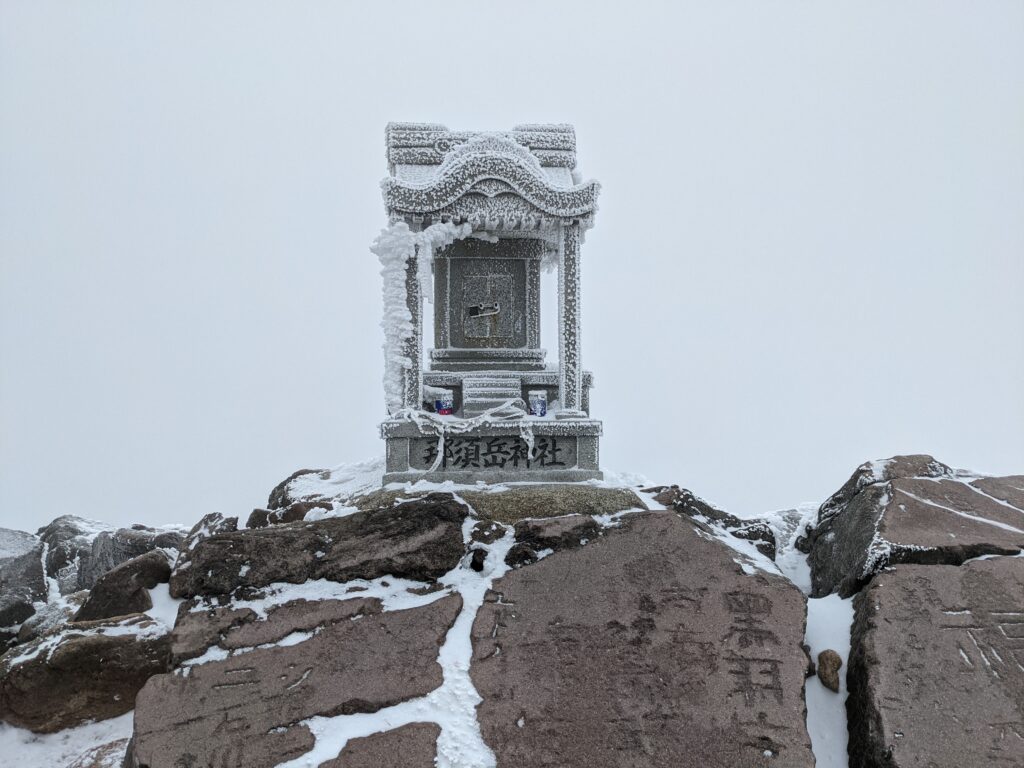
While there weren’t many people on the trail, the summit was much more crowded. There’s a ropeway up most of the way the mountain, making access easy and a popular destination (especially with the hot springs nearby). The hike wasn’t 4 hours total, but that was the goal for the day.
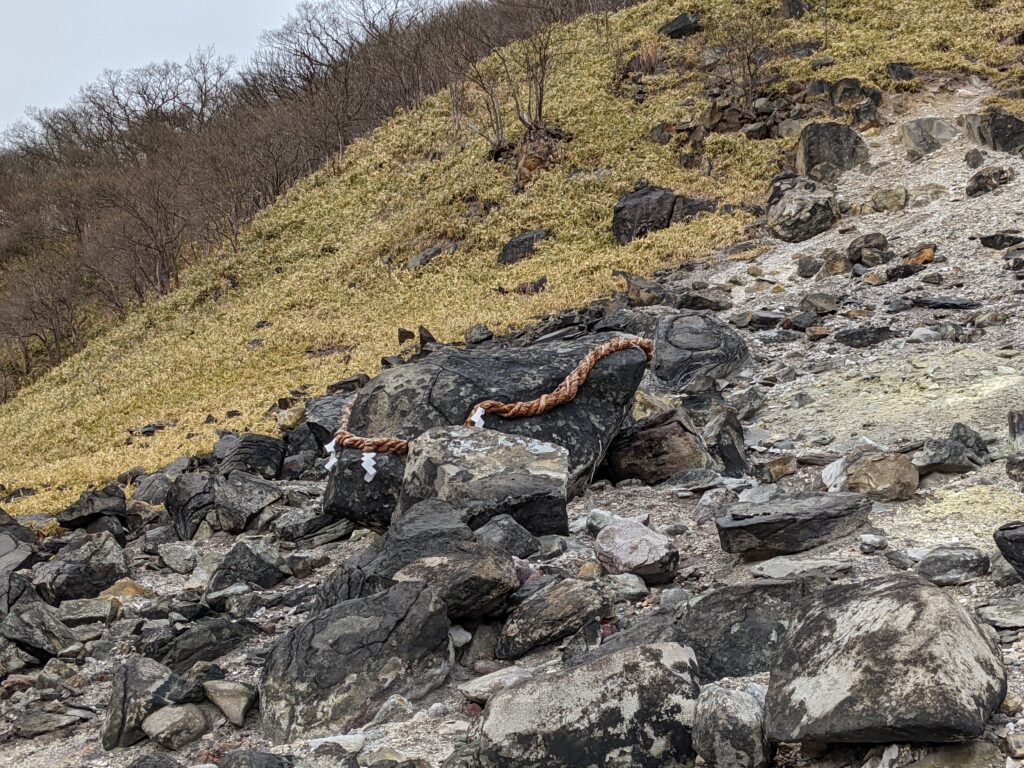
On the way down I decided not to wait for the bus and instead walked down all the way to Benten springs. Once I was refreshed I took the bus down to the Nasu-Yumoto (main) hot spring area where I had lunch and walked around. It’s in an actively volcanic valley and the water is opaque white (also quite hot). There poisonous gases gave rise to the legend that one rock was possessed by Tamamo-no-Mae (the notorious nine-tailed fox) and its evil emanations caused sickness.

